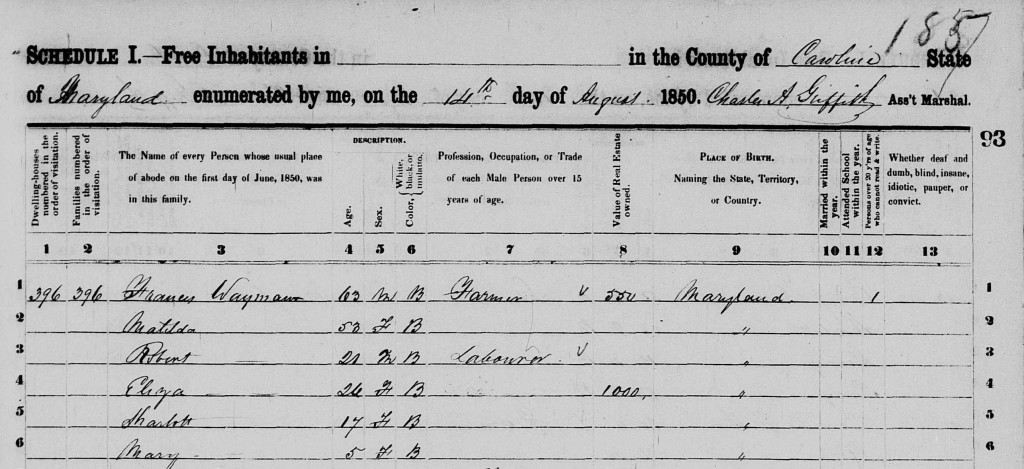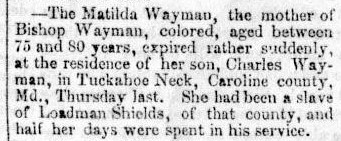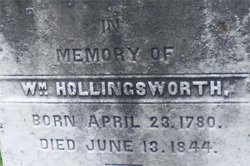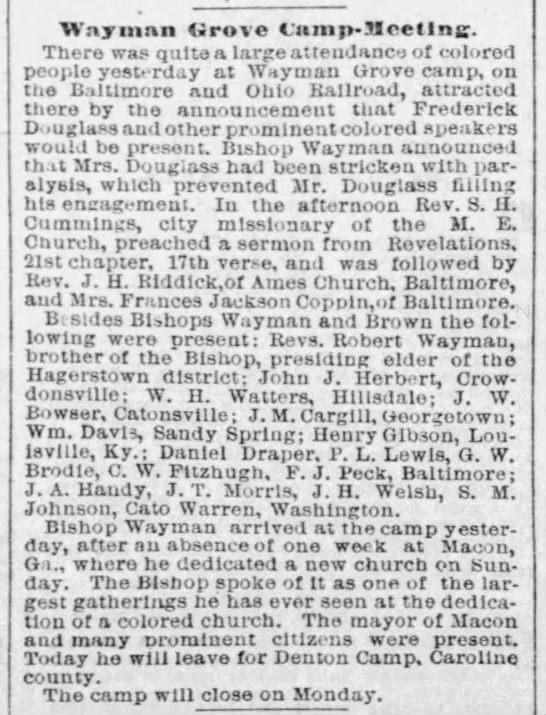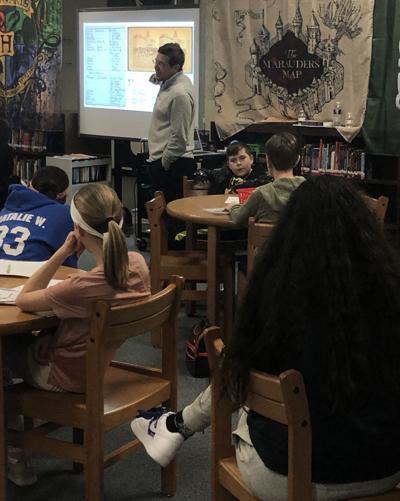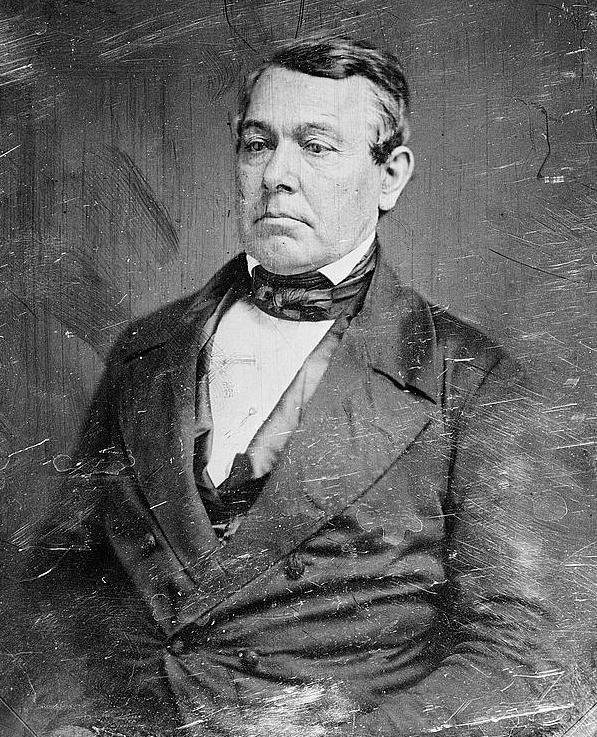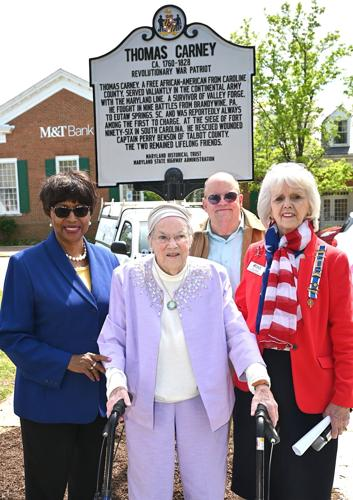
DENTON — A new historic marker, commemorating African American Revolutionary War hero Thomas Carney, was unveiled in front of the Caroline County Circuit Courthouse in Denton on April 30. A crowd of local politicians, distant family members, Daughters of the American Revolution and the local chapter of the NAACP gathered in folding chairs on a sunny morning for the occasion. Carney served in the Continental Army, was a survivor of Valley Forge and fought in nine battles from Pennsylvania to South Caroline. During the Siege of Fort Ninety-Six, Carney saved General Perry Benson of Talbot County in battle and they became lifelong friends.
“The fact that Denton is recognizing Mr. Carney is important and the tenacity of Mrs. (Helen “Betty”) Seymour for finding this information. She chased it for five or six years,” said Fred Minus, who was dressed head to toe in Revolutionary War garb.
Historian and DAR member, Seymour was the unnamed star of the day.
“The most exciting day was the day I found out where he lived. I was in Annapolis and I asked for the papers. There was a bill for his rent. That is how we know where he lived and who he was paying rent to. It was on Adams Landing Road,” Seymour said. “Cheryl Smith was a big help to me. I enjoyed the search. This unveiling is long overdue.”
Her research friend Smith also is in the Daughters of the American Revolution.
“Our chapter is dedicated to General Perry Benson, and Thomas Carney saved his life. There usually isn’t a lot of information about a black man from that period, but if you look it up, there is an amazing obituary about Thomas Carney. A real hero, but nobody knows where he is buried,” Smith said.
Reisha Rainey, the first Daughters of the American Revolution member who is an African American, is also a direct descendent of Thomas Jefferson.
She said, “I am excited the community is here and there will be a standing monument for the contribution of an African American soldier who contributed to the founding of the independence of America. I love the ladies. The sisterhood of the organization is great.”
The memorial stayed cloaked as senators and delegates gave citations. The large Carney contingent mixed with the NAACP members There weren’t enough chairs to hold all the people interested in being a part of the event.
Caroline County Commission President Larry Porter said, “You get a phone call and say, ‘how are we going to pull this off?’ There’s a lot of work that goes on behind the scenes. Our staff and people who put the pole up, Parks and Rec, Mark Lasocha was out here, making sure everything looks good.”
There were many speeches.
“Thomas Carney deserves honor and recognition for his sacrifice and contribution to the war for independence. Congratulations to the General Perry Benson chapter of the DAR with the NAACP Caroline County Branch on this historical celebration of Denton’s unsung hero,” Maryland State Society DAR Vice Regent Elizabeth Deerin.
Del. Johnny Mautz and Sen. Addie Eckardt gave citations to the Caroline County Branch of the NAACP, Seymour and to the General Harry Benson Chapter NSDAR.
Deerin recalled some of Carney’s story: At the battle of Camden, Carney was described with unshakable courage and credited with participating three bayonet charges. At another battle Carney boasted of killing seven men with his bayonet. It was the battle of Fort Ninety-Six that Carney served with Captain Benson. Benson got a severe wound to his arm. Mr. Carney carried Benson and, reaching the doctors, fainted from shear exhaustion. Carney stayed with Benson while he got his medical attention. Benson became a General and helped Carney to get a pension from the State of Maryland and the federal government and helped him lease 50 acres of farmland in Denton. Carney died in 1820 at 74.
“We place a marker here today on this courthouse green as a tribute to his life for his service in both wars to ensure the United States remained free for the centuries to come. Mr. Carney we salute you,” said Deerin.
Dr. Willie Woods, president of Caroline County Branch of the NAACP, said, “I am pleased to say there was 100% agreement that the NAACP should proceed with this collaboration for the installation and unveiling of this historic marker. The marker aligns with our mission to ensure freedom, justice and equality of rights for all persons. After saving Captain Benson, it resulted in a lifelong friendship revealing an inspiring example of racial harmony, unity and mutual respect. We also want to thank Mrs. Seymour for her research and persistence. Remembering African American roles have often been overlooked or not recognized. This marker will memorialize Mr. Carney for generations to come.”
With the help of two people and a walker, Seymour made it to the podium.
“I did see an ad in a magazine for an exhibit down in Virginia. So with my husband in tow, we went down to Virginia and visited the museum. We met the curator at the exhibit. And then to Annapolis, we looked up the loose papers and his obituary. We looked over these papers and in it we found this paper which is a copy of his of his rent bill, which clarified what we had been thinking all along,” said Seymour.
Like a sleuth sifting through dusty old papers she found evidence of Carney living in Caroline County. Part of the sleuthing was also finding any descendants of Carney’s. They found some Carneys outside of Philadelphia whose grandfather had been in the Civil War. Seymour teamed up with J.O.K. Walsh, who is president of the Caroline County Historical Society, to track them down.
Relative Wayne Carney said, “Jerry Seiler, Betty Seymour, J.O.K. Walsh — people I have been talking to — made this day possible to bring the story of Thomas Carney to life. So, I thank them.”
The DAR ladies removed the black cloth to reveal the marker. Everyone cheered heartily, and Denton has another interesting reason for visitors to check out downtown. Carney is remembered in formal fashion.
With that all available parties lined up for two separate group pictures. One with the NAACP and the Carney family and the other with the Daughters of the American Revolution.
STAR DEMOCRAT: Carney celebrated with historic marker in Denton
